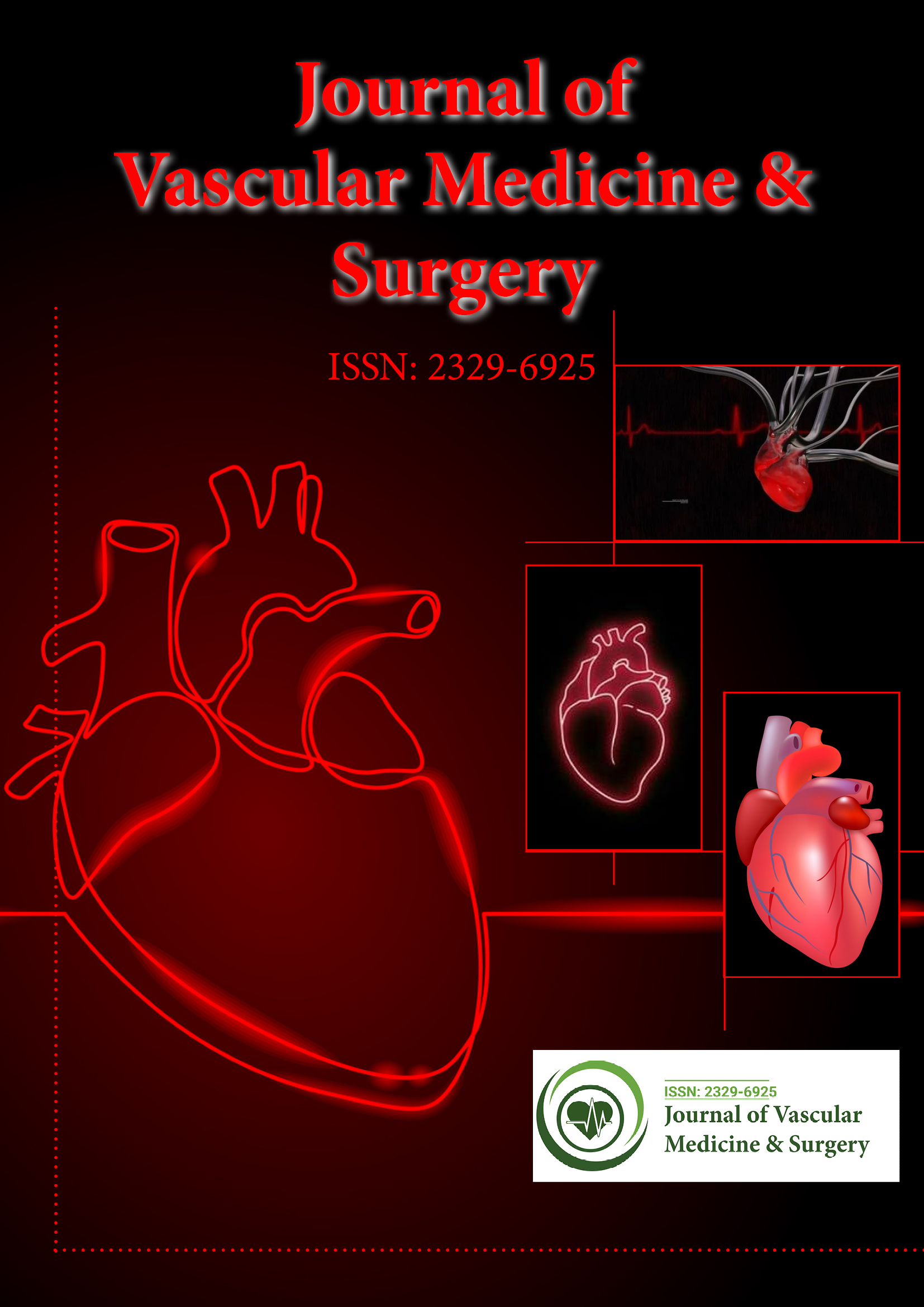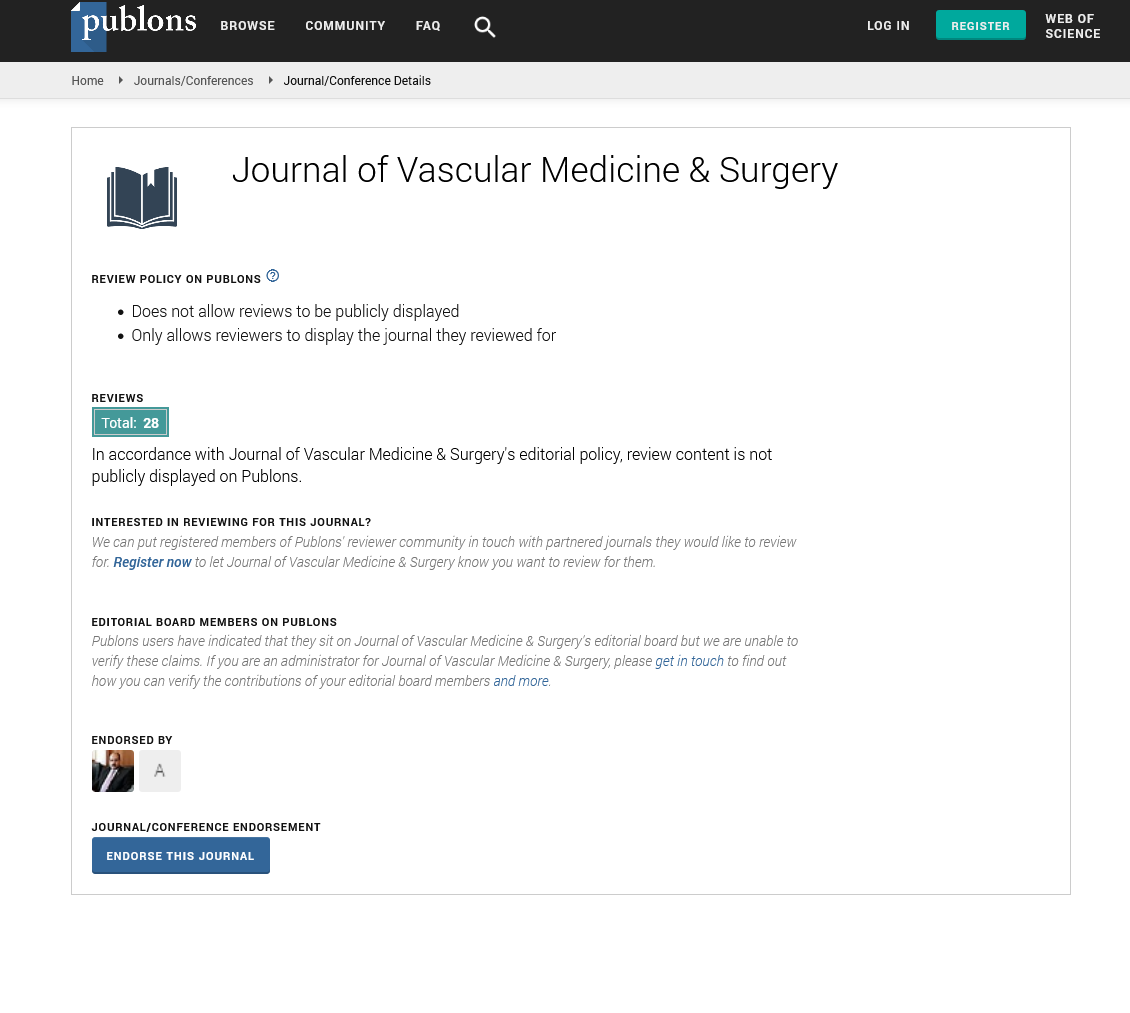Indexed In
- Open J Gate
- Academic Keys
- RefSeek
- Hamdard University
- EBSCO A-Z
- OCLC- WorldCat
- Publons
- Euro Pub
- Google Scholar
- SHERPA ROMEO
Useful Links
Share This Page
Journal Flyer

Open Access Journals
- Agri and Aquaculture
- Biochemistry
- Bioinformatics & Systems Biology
- Business & Management
- Chemistry
- Clinical Sciences
- Engineering
- Food & Nutrition
- General Science
- Genetics & Molecular Biology
- Immunology & Microbiology
- Medical Sciences
- Neuroscience & Psychology
- Nursing & Health Care
- Pharmaceutical Sciences
Short Communication - (2024) Volume 0, Issue 0
Heart Disease, its Classification, Risk Factors, and Symptoms are Essential to Managing a Common Medical Condition
Jackson Dellborg*Received: 26-May-2024, Manuscript No. JVMS-24-26567; Editor assigned: 28-May-2024, Pre QC No. JVMS-24-26567 (PQ); Reviewed: 12-Jun-2024, QC No. JVMS-24-26567; Revised: 19-Jun-2024, Manuscript No. JVMS-24-26567 (R); Published: 28-Jun-2024, DOI: 10.35248/2329-6925.24.S22.550
Description
Heart disease, also known as Cardiovascular Disease (CVD), encompasses a wide range of conditions affecting the heart and blood vessels. It maintains the most prevalent cause of death around the world, affecting millions of people every year.
Types of heart disease
Heart disease refers to an array of different conditions. That includes:
Coronary artery disease: It is the most frequent form of heart disease. It develops when the accumulation of plaque narrows or blocks the coronary arteries, which provide blood to the heart muscle. This can cause myocardial (chest pain), heart attacks, and other difficulties [1-3].
Heart failure: Heart failure, also known as congestive heart failure, it develops when the cardiovascular fails to circulate enough blood to supply the physiological requirements of the human body. This condition can be caused by coronary artery disease, excessive blood pressure, or other fundamental cardiac diseases.
Arrhythmias: Arrhythmias are irregular heartbeats caused by electrical disorders in the heart. Atrial fibrillation and ventricular tachycardia are examples of difficulties that can vary from harmless to potentially fatal conditions [4-6].
Heart valve disease: Heart valve disease occurs when one or more of the heart's valves fail to function effectively, resulting in decreased blood flow throughout the heart. This can result to conditions including mitral valve prolapse or aortic stenosis [7].
Congenital heart disease: Congenital heart disease refers to cardiovascular problems that develop after birth. These abnormalities can have an impact on the structure and function of the heart, causing an array of difficulties throughout life.
Cardiomyopathy: Cardiomyopathy causes abnormalities in the heart muscle, establishing it difficult for the heart to pump blood. This illness can be transmitted or induced by other factors, such as infections or chronic hypertension.
Causes and risk factors
Several factors contribute to the development of heart disease. Some are adjustable through lifestyle changes, while others are beyond individual control:
High blood pressure: Hypertension can damage the arteries over time, resulting in more susceptible to plaque development and increasing the risk of heart disease [8].
High cholesterol: Increased levels of Low-Density Lipoprotein (LDL) cholesterol can cause plaque development in the arteries, reducing them and consequently decreasing blood flow to the heart [9].
Smoking: Smoking causes inflammation to the arteries, plaque formation, and an increased risk of blood clots, all of which can result in heart disease [10].
Diabetes: Diabetes, particularly when improperly treated can result in heart disease by decreasing blood vessels and increasing the risk of hypertension and cholesterol problems.
Obesity: Excess weight enhances the risk of hypertension, high cholesterol, and diabetes, all of which can contribute to heart disease.
Sedentary lifestyle: Reduced physical activity is a major risk factor for cardiovascular disease. Regular exercise maintains a healthy weight, reduces blood pressure, and improves cholesterol levels.
Poor diet: A diet challenging in saturated fats, trans fats, salt, and sugar can contribute to the development of heart disease. A dietary plan that includes fruits, vegetables, whole grains, and protein is essential for heart health.
Family history: A family history of heart disease enhances a person's risk, indicating that they are susceptible to the disease.
Age and gender: The risk of heart disease develops with age, and men are more probable to develop it immediately than women.
Symptoms of heart disease
The symptoms of heart disease can vary depending on the specific condition, but common signs include:
Chest pain or discomfort: It is commonly characterized as pressure, squeezing, or swelling in the chest. This is an established sign of coronary artery disease and heart attacks.
Shortness of breath: Difficulty breathing, particularly after intense physical activity, can indicate heart failure or other cardiovascular difficulties.
Fatigue: Abnormal fatigue, especially after regular activities, can indicate heart problems.
Palpitations: Arrhythmia symptoms can involve an immediate moving, or damaging heartbeat.
Swelling: Swelling in the legs, ankles, or abdominal can be caused by heart failure, which occurs when the heart fails to adequately circulate blood.
Dizziness or lightheadedness: These symptoms are frequently caused by arrhythmias or other cardiac disorders that affect blood flow.
Nausea or indigestion: These symptoms, particularly in women, can sometimes be associated with heart attacks.
References
- Pergantou H, Avgeri M, Komitopoulou A, Xafaki P, Kapsimali Z, Mazarakis M, et al. Venous thromboembolism at uncommon sites in neonates and children. J Pediatr Hematol Oncol. 2014; 36(8): 624-629.
[Crossref] [Google Scholar] [PubMed]
- Saracco P, Bagna R, Gentilomo C, Magarotto M, Viano A, Magnetti F, et al. Clinical data of neonatal systemic thrombosis. J Pediatr. 2016; 171.
[Crossref] [Google Scholar] [PubMed]
- Rosendaal FR. Thrombosis in the young: Epidemiology and risk factors. A focus on venous thrombosis. Thromb Haemost. 1997; 78(1):1-6.
[Crossref] [Google Scholar] [PubMed]
- Andrew M, Vegh P, Johnston M, Bowker J, Ofosu F, Mitchell L. Maturation of the hemostatic system during childhood. Blood. 1992; 80(8):1998-2005.
[Crossref] [Google Scholar] [PubMed]
- Kenet G, Cohen O, Bajorat T, Nowak-Göttl U. Insights into neonatal thrombosis. Thromb Res. 2019; 181.
[Crossref] [Google Scholar] [PubMed]
- Makatsariya A, Bitsadze V, Khizroeva J, Vorobev A, Makatsariya N, Egorova E, et al. Neonatal thrombosis. J Matern Fetal Neona. 2022; 35(6):1169-1177.
[Crossref] [Google Scholar] [PubMed]
- Van Ommen CH, Nowak-Göttl U. Inherited thrombophilia in pediatric venous thromboembolic disease: why and who to test. Front Pediatr. 2017; 5:50.
[Crossref] [Google Scholar] [PubMed]
- Yang JYK, Chan AKC. Neonatal systemic venous thrombosis. Thromb Res. 2010; 126(6):471-476.
[Crossref] [Google Scholar] [PubMed]
- Issing PR, Issing C. Diagnosis and treatment of jugular vein thrombosis. HNO. 2019; 67(6):469-482.
[Crossref] [Google Scholar] [PubMed]
- Williams S, Chan AKC. Neonatal portal vein thrombosis: Diagnosis and management. Semin Fetal Neonatal Med. 2011; 16(6):329-339.
[Crossref] [Google Scholar] [PubMed]
Citation: Dellborg J (2024) Heart Disease, its Classification, Risk Factors, and Symptoms are Essential to Managing a Common Medical Condition. J Vasc Surg. S22:550.
Copyright: © 2024 Dellborg J. This is an open access article distributed under the terms of the Creative Commons Attribution License, which permits unrestricted use, distribution, and reproduction in any medium, provided the original author and source are credited.

